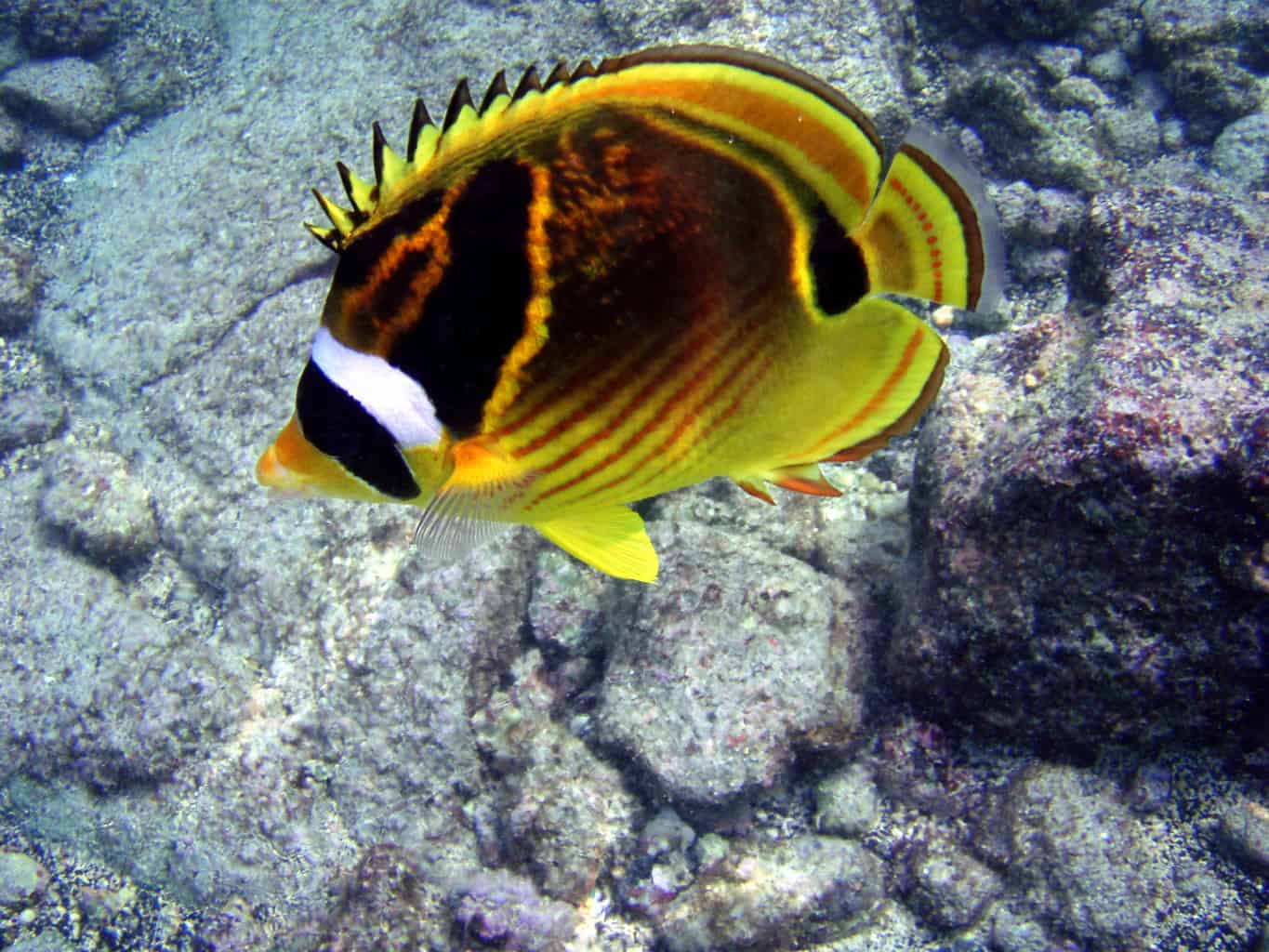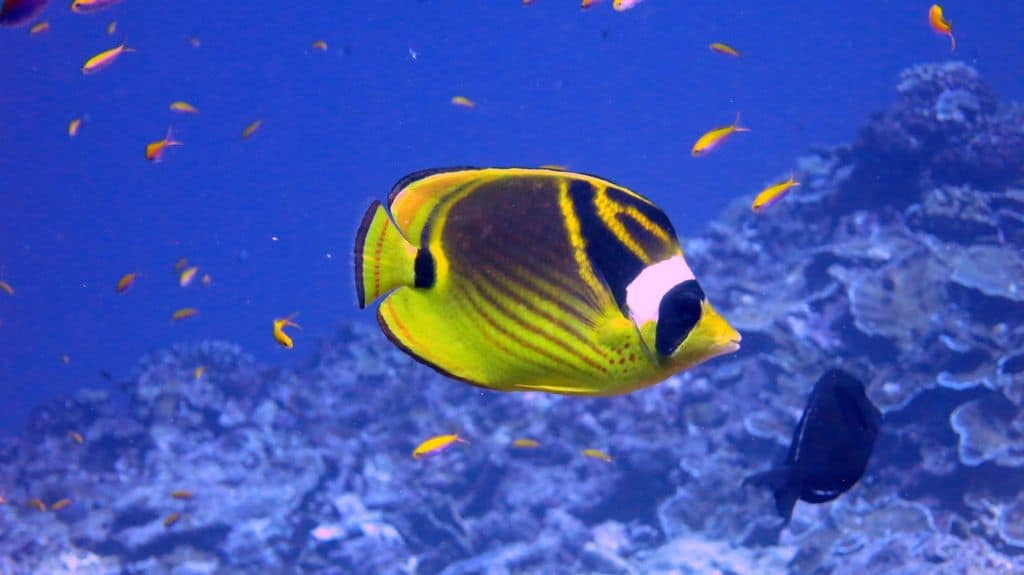When I first started keeping Saltwater fish I always wanted to keep a Raccoon butterflyfish but I was put off by many people who said they were not suitable for my first Butterflyfish.
They were wrong! Racoon Butterflyfish are an excellent choice even for beginners.
Butterflyfish and in particular the Raccoon Butterflyfish are very easy to care for once you have your tank water setup correctly and you understand their feeding needs.
In this article, we will explain all you need to know to keep these amazing fish in your home aquarium.
| Scientific Name | Chaetodon lunula |
|---|---|
| Color | Black,Yellow,White,Orange |
| Size | 7-8” Max |
| Care Level | Easy |
| Origin | Fiji, Hawaii, Indonesia, Maldives, New Caledonia, Tahiti |
| Diet | Omnivore |
| Family | Chaetodontidae |
| Tank Size | 120 Gals+ |
| Reef Compatible | No |
| Temperament | Peaceful |
| Breeding | No reported home aquarium breedings. |
| First fish | They are easy to care for but large aquarium needed and picky eaters |
| Jumpers | No, odd occasions but not know to jump out of the tank |
| Aquarium Decor | Rocks, caves and fast flowing water |
| Suitable Tank mates | Wrasse,clownfish, dwarf lionfish, Smaller triggers, Filefish |
| Price | $40-$80 |
Table of Contents
Racoon Butterflyfish Require Larger Tanks
Let’s start with the tank itself. You need a saltwater fish tank no smaller than 120 Gallons. You will also need to provide plenty of rocks and places for them to hide in. They will swim out into the open space at the front of your tank when they feel safe and settled.
In most average home aquariums you should only keep a single Raccoon Butterflyfish as most home aquariums don’t have space to home multiple Raccoon Butterflyfish without them fighting. Unless you’re lucky enough to own a very large saltwater aquarium Raccoon Butterflyfish will fight over territory.
They will also fight with other Butterflyfish but are normally fine with most other saltwater fish. They do however have a tendency to fight with Lionfish & Triggerfish for some reason.
Like most Saltwater fish, water quality is very important and Raccoon Butterflyfish are not different. They need excellence quality water and will thrive in a large tank with great water quality, plenty of rocks to hide in and good filtration.
They are not suitable for reef aquariums as they will nip and feed on soft corals. In the wild, this is a staple part of their diet but in a home aquarium, this is not an option.

What do do Raccoon Butterfly fish eat?
Raccoon Butterflyfish are Omnivores.
Omnivore fish can eat both Meat and Vegetable matter. These type of fish are normally very easy to feed due to the different types of foods available to you.
The types of foods you could feed your Raccoon Butterflyfish are:
- Mysis shrimp
- Brine shrimp
- Angel & Butterfly mix
- Finely chopped mussels
- Crab
- Shrimp
- Squid
- Cockles
- Dried Seaweed
One of the best foods for butterfly fish is kelp fish food. Packed with all the natural nutrients they need when used as part of a balanced diet. We use Omega One Super Veggie Kelp available from Chewy.com.
They will also eat marine flake and Saltwater pellet foods also but make sure you give them a varied diet and if you’re feeling generous you could even buy then a small soft coral to nip and enjoy.
My Raccoon Butterflyfish also loved dried Seaweed held in place in my tank by a seaweed clip. I purchased mine from Amazon. I have provided the links for you to save you time.


